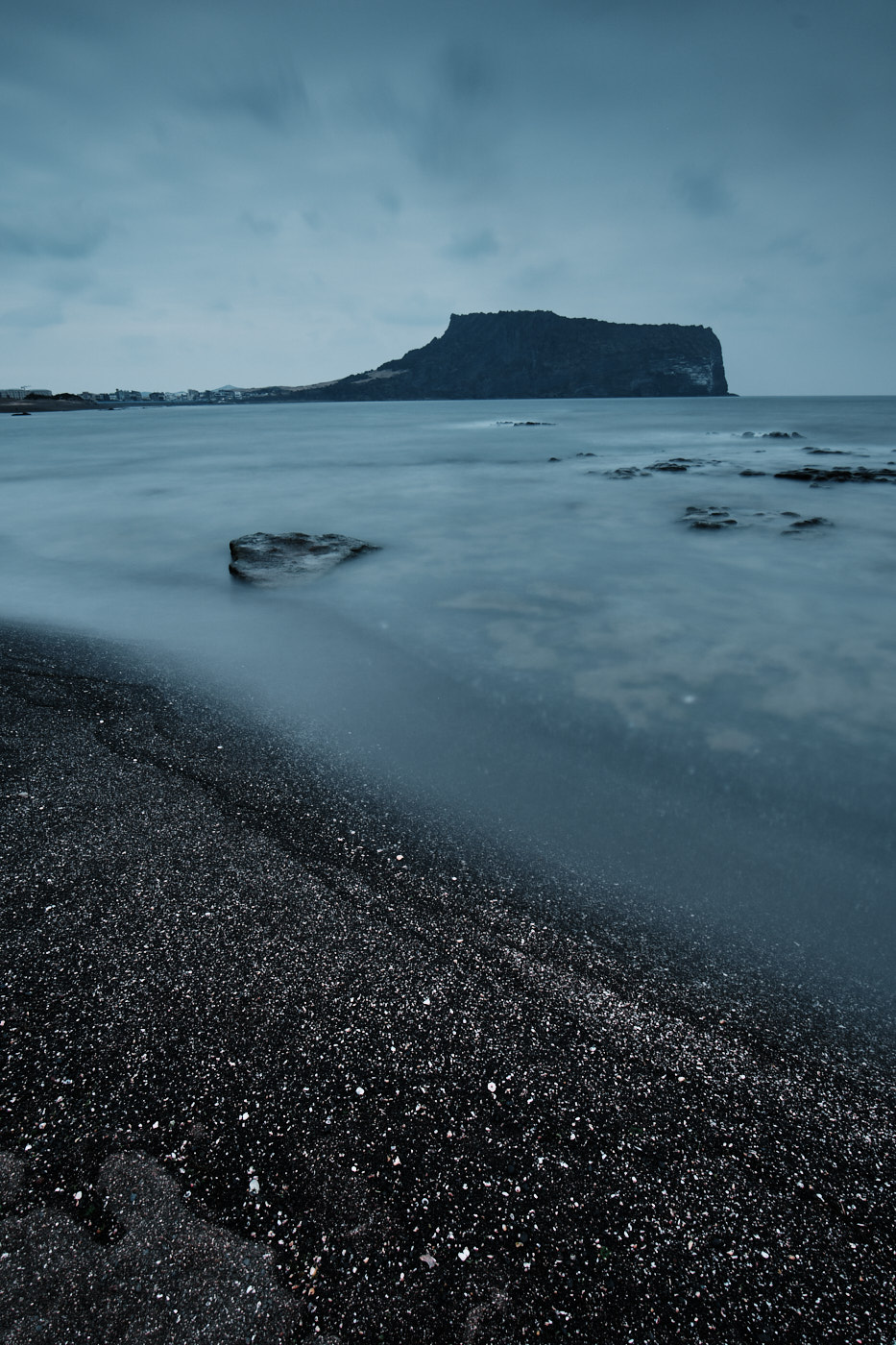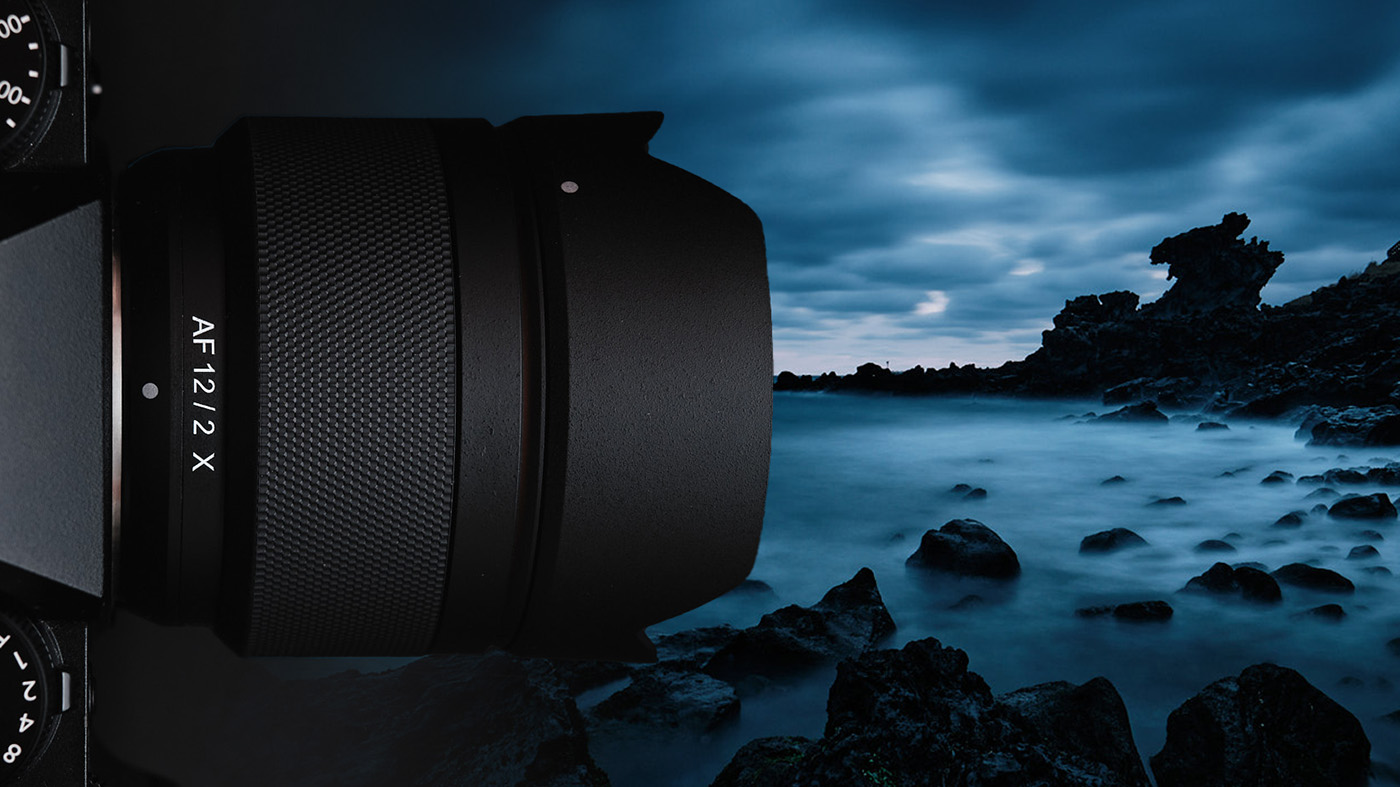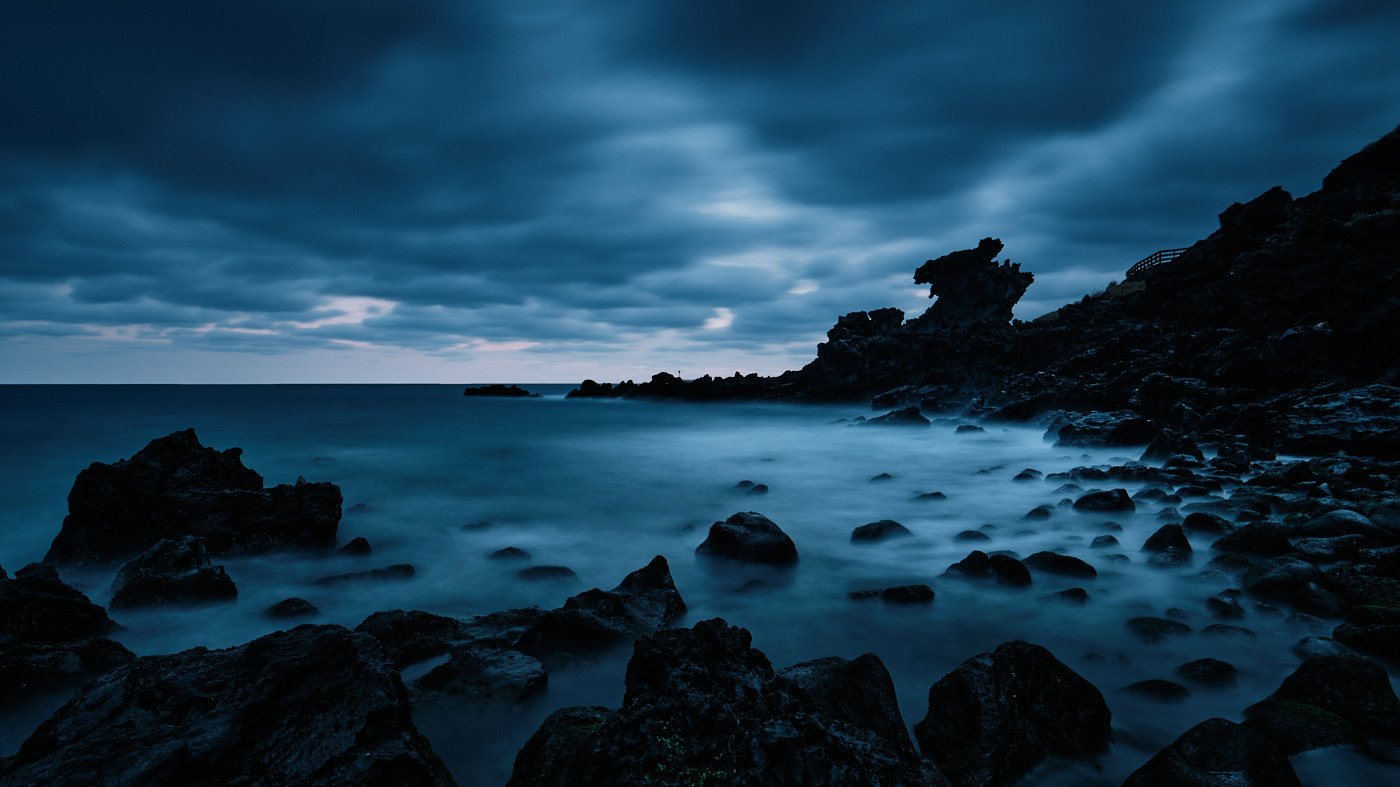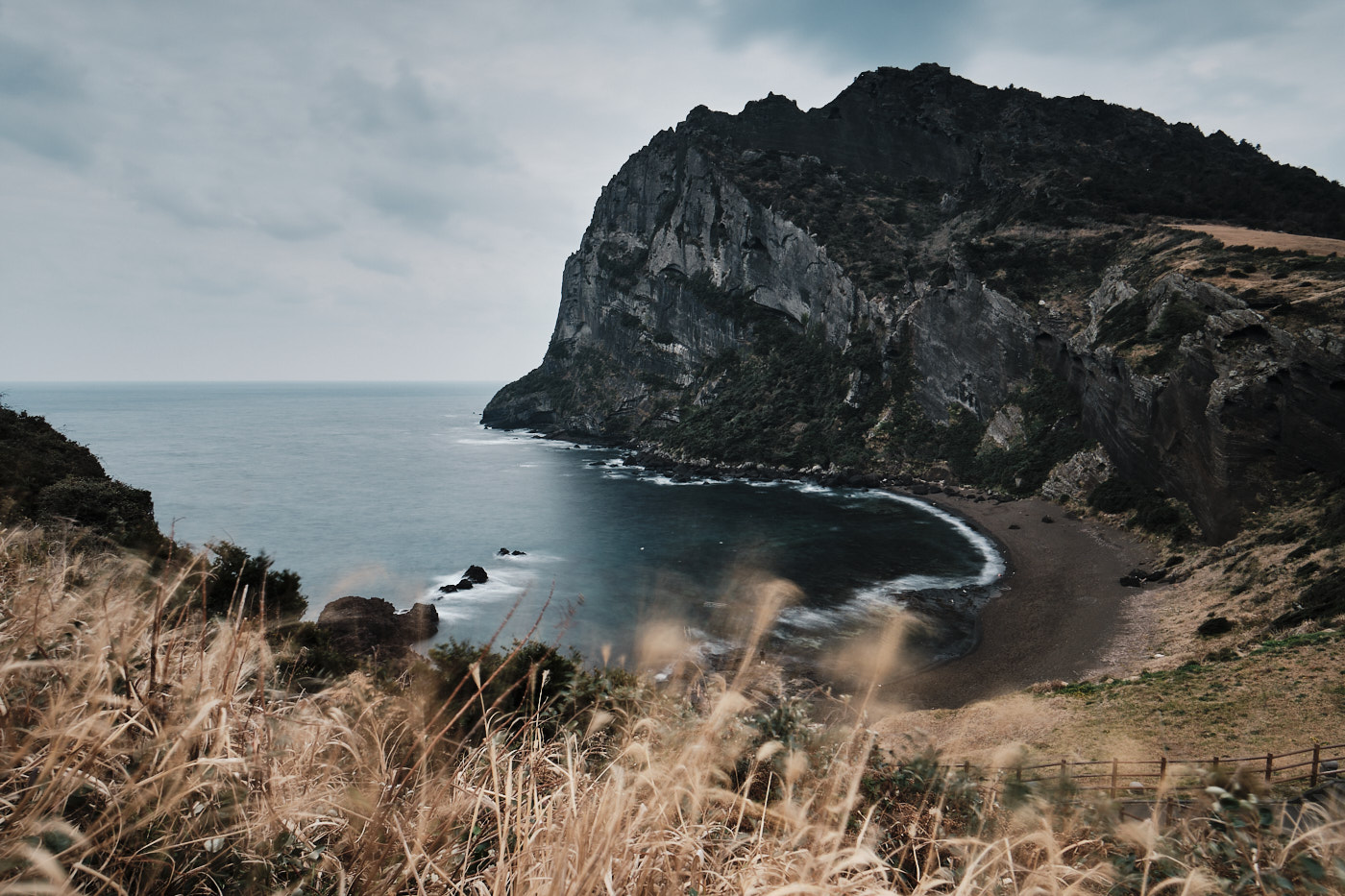Samyang Optics, the Korean lens manufacturer known for its high-quality budget manual focus lenses, has recently released its first autofocus lens for the Fujifilm X system, the 12mmF2 AF. It is an update to their extremely popular 12mmF2 with autofocus, weather sealing and a slightly changed optical formula. I’ve been waiting for an update to the original lens for a while as it had a couple of durability issues I wasn’t particularly fond of, so I was definitely excited to pick up the new lens. Let’s see how it performs.
Last month, I had the opportunity to spend a week on Jeju Island with my wife escaping the bitter cold of Seoul’s winter for the much milder temperatures of the southernmost province. Of course, there was no way I wasn’t taking a camera or two with me and getting some sunrise and sunset photography done in one of the most beautiful places in the country. This was the perfect chance to spend some quality time with my Samyang 12mmF2.
Considering subjects
Around 25,000 years ago, the island as we know it today was formed by eruptions around the main volcanic peak, Mt. Halla, that formed the Oreum (Jeju dialect for parasitic cone). Jeju Island is also colloquially known as Samda Island (the Island of Three Plenties, referring to rocks, wind, and women). So, volcanic features, rocks and wind would all feature heavily in my photographs of the island. The Samyang 12mm gave me some great opportunities to include them in an interesting way.
The temptation with an extremely wide-angle lens like this is to attempt to get as much as possible in the frame from corner to corner. Jeju Island definitely offers a lot of gorgeous vistas that can benefit from this approach. However, to make an image that talks a little more about the formation of the island and showcases it in a way that perhaps a casual photographer might not think to takes a little more thought. Not only that, the Samyang 12mm allows you to focus down to just 20cm, so getting in close and working with perspective distortion or including foreground extremely close to the camera is also possible.

A Buddha statue with a background of volcanic rocks. X-T4 + Samyang 12mmF2 AF (1/1000, f/2.8, ISO 160)
Rocks
On my first morning, I had an opportunity to photograph one of the most well-known rock formations on the island, Yongduam (Dragon’s Head Rock). When you first get down to the area where the shape of the dragon can be seen, it’s all too easy to grab a snap and keep moving. However, if you do that, not only will you take in the construction site in the background, the wharf and the Ramada Hotel, but miss the opportunity to make use of a wide-angle lens’ greatest strength: pulling in foreground for context.
I arrived before sunrise in the hopes that the weather forecast would be wrong and I’d see some direct light to work with. However, that plan was quickly thwarted so I decided to embrace the dramatic weather and make a dark long exposure. This would also speak to the strong winds that were blowing as, with a long enough exposure, I could capture the motion in the clouds.
So, I set about scrambling over the slippery volcanic rocks that make up the bay until I settled on a composition. I knew I needed to stay low so as to cover up the city behind, but also to emphasise the foreground. When it comes to wide angle lenses, perspective is greatly distorted as you move closer to or farther from an object. This effect gets more prominent as the focal length shortens. Even on an APS-C sensor, 12mm is a very short focal length and so I could get extremely close to the rocks in the foreground and make them appear much larger than they are.
Once I was down there, it was simply a case of looking through the lens, moving backwards, forewards, left and right in order to see what would be revealed or covered up as I changed my perspective. I wanted to find balance in the scene from left to right so that my eye would follow the foreground rocks up to the main subject.
After stopping down to f/8 or f/11, the Samyang renders quite good sharpness from corner to corner. For this scene, I wanted detail all through the frame, so f/11 was the ideal aperture for both sharpness and depth of field. It also helped me get to my exposure time of 50 seconds using the Haida M7 and 6-Stop drop-in filter. This gave me a long enough exposure to give an ethereal feel to both the clouds and the water, bringing more prominence to the rocks I was trying to photograph.

Yongduam, post sunrise. Getting close to the rocks in order to make use of perspective distortion. X-T4 + Samyang 12mmF2 AF (50″, f/11, ISO 160) – Haida M7 filters.
Wind
Photographing wind might seem like a bit of an impossibility, but much like other invisible forces, we can photograph their interactions with the world. On days of extreme wind, the trees and grasses of the island all lean in a specific direction, traditional houses are low and constructed from rock and mud, and the fences that surround farms are all built from interlocking volcanic rocks. Each and every one of these is a direct result of the winds and can be used to represent it in photographs.
On my third day, I had an opportunity to walk around the base of Seongsan Sunrise Peak, a volcanic crater on the east side of the island. The wind was blowing hard and it was all I could do to keep my tripod steady. Wanting to express the strength of the wind, I looked for something to place in the foreground of my image. The reeds on the hillside were blowing frantically, so I decided to include them as my reference to the wind.
Composition for a shot of this side of the peak is somewhat limited as there are walking paths we need to stick to and the reeds are only on the uppermost path. Moving any further up the path, I was met with bushes that blocked my view and any further down brought the red roof of the Haenyeo (lady diver) hut into view. Using my position in relation to the foreground, I was able to remove all distractions except, perhaps, the small fence on the right. I also liked how the row of rocks in the water pointed at the peak and how the curve of the land meeting the water wraps around the bottom of the frame.
One thing you might notice here if you look closely is one of the failings of the Samyang lens. It does have fairly extreme chromatic aberration at times. Even stopped down like this, we can still see its effects around the edge of the peak where it meets the sky.
Volcanic features
Perhaps the most well-known volcanic feature, besides Mt. Halla itself, is Seongsan Sunrise Peak that we see above, a tuff cone on the eastern edge of the island. Both times I visited on this trip, the weather was flat and dull. Oftentimes, a different perspective, like the one offered by a wide-angle lens can offer photographic opportunities that we wouldn’t otherwise see. This is why I love having a tiny wide-angle prime like this Samyang lens in my bag.
Wide-angle lenses can be great for emphasising foreground elements, but when the foreground has been submerged by high tide, what do you do? Well, look for other shapes you can emphasise. Here, I noticed that the curve of the shoreline resembled the shape of the tuff cone in the background, so I set about finding a section of it to use in the composition. With this being a composition about shapes, I then used my ND filter to completely remove the texture from the water and allow the shapes to take prominence.

Seongsan Sunrise Peak from Gwangchigi Beach. Awful weather provides other opportunities. X-T4 + Samyang 12mmF2 AF (40″, f/11, ISO 160) – Haida M7 filters.
I hope you’ve enjoyed this short tour of Jeju Island with the Samyang 12mmF2 AF. It was a great little tool to work with for a short trip like this one. It takes up so little space and provides quite decent image quality to boot. If you’d like to know more about the technical side of this lens, I made an in-depth review video here.























